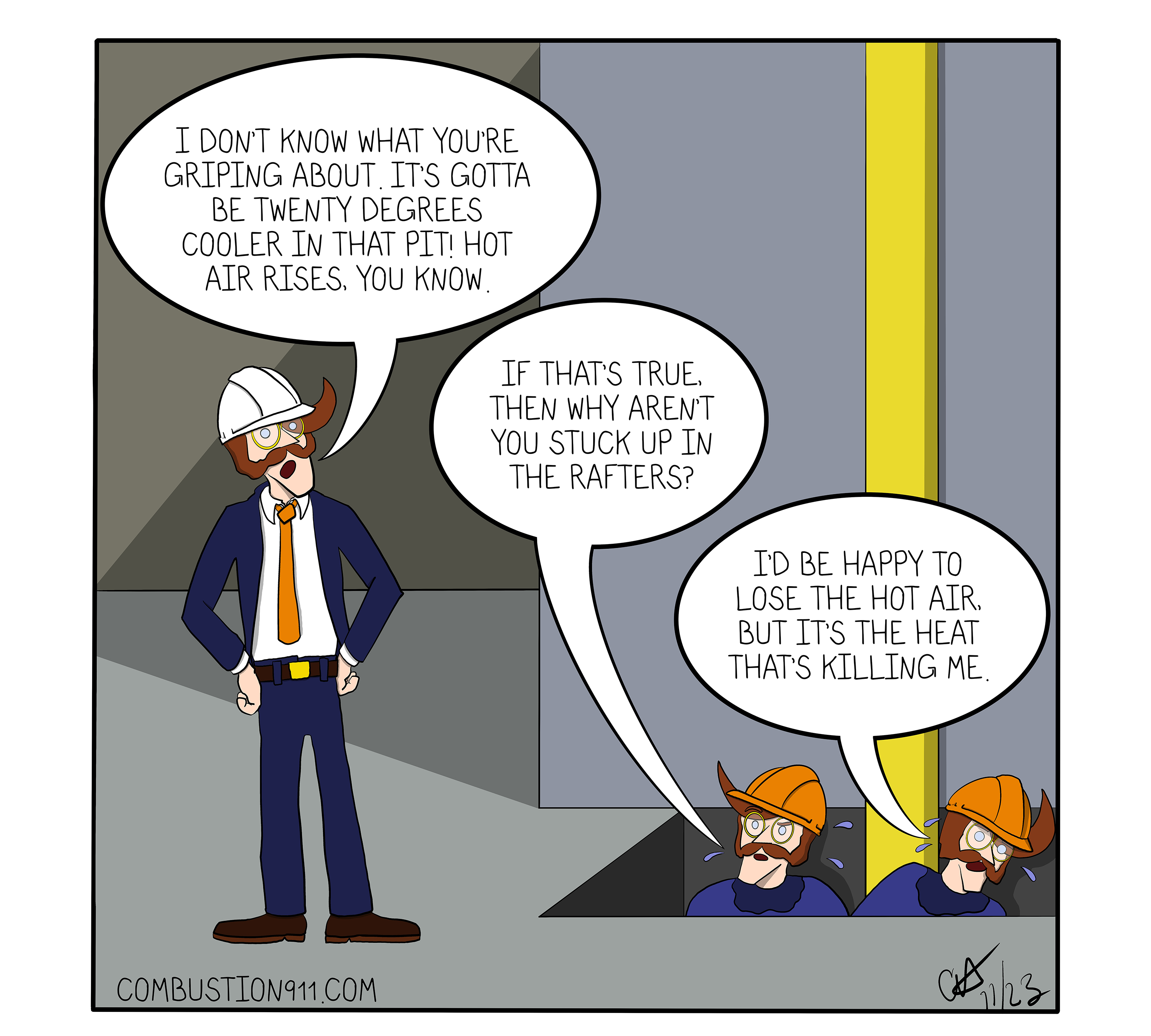
There’s a common misconception that heat rises.
It does not. Heat radiates equally in all directions.
The misunderstanding comes from the true and observable statement that, relative to cooler air, hot air rises. That’s why hot air balloons work, also why many politicians have excellent posture.
For commercial and industrial heating, knowing that heat and hot air are not the same thing is very important when designing furnaces, ovens, boilers, and other process heating equipment.
Convection
Convection is the primary way for heat to transfer to your work product (whether ceramic, metal, air, etc.) for direct-fired burners operating at relatively low temperatures, up to about 1200°F (650°C). Hot gases exit the burner and, as they move through the furnace chamber, the heat from these gases interacts with the furnace environment, and the work. This is how the heat is transferred from one to the other over time. Convective heating can be greatly enhanced using pulse-fire, mixing fans, and/or a high excess-air/fuel ratio.
Radiation
Radiation is the method by which indirect-fired or radiant-style burners provide heat to the work, and can be found in lower temperature systems. Indirect-fire is often used when the work is liquid, or sensitive to the products of combustion, those hot gases that exit the burner. By firing into a radiant tube, for example, the tube heats up, and radiates that heat, permeating the furnace chamber. Radiant heat is also observable in direct-fired systems above 1200°F (650°C), when the furnace lining begins to glow (i.e., radiate).
Combustion Comics
We ran a series of combustion comic strips ten years ago, as part of Baron von Olsträd’s Sketchbook. This was our first. We’re pulling them out of the archives and dusting them off a bit, giving them a fresh look, and re-releasing them into the world. The idea is to make light of some pet peeves and common issues. We hope you enjoy them!











